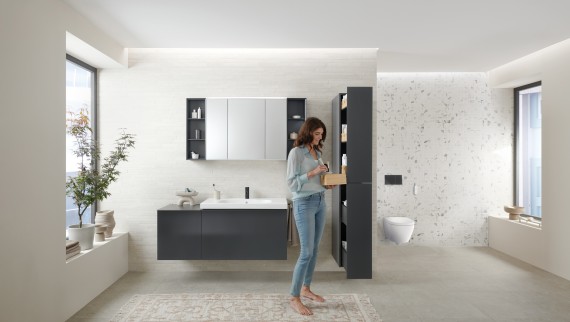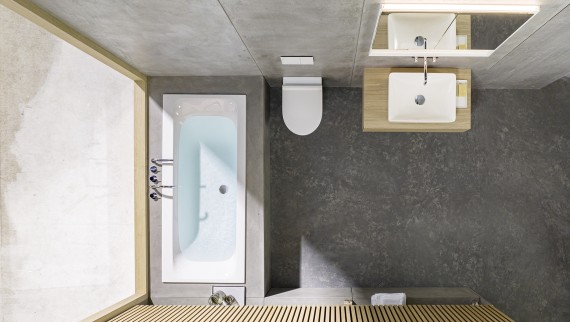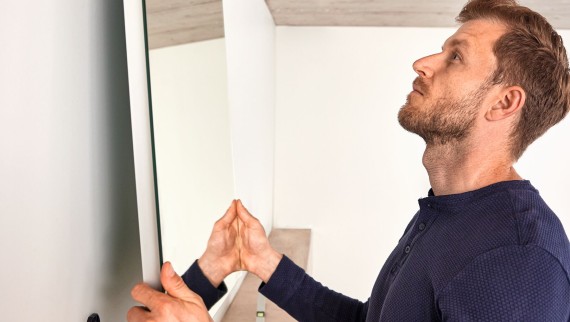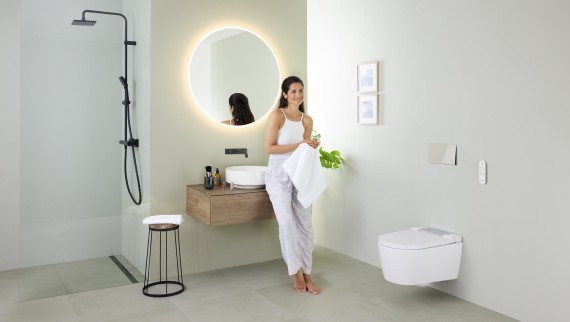6 reasons wall-hung toilets are perfect for modern bathrooms
The use of wall-hung toilets in UK homes has grown over the past two decades. Today, these fixtures are becoming the go-to-solution for modern bathrooms. And the advantages make it clear why.
What is a wall-hung toilet?
A wall-hung toilet, also known as a wall-mounted or floating toilet, is a modern bathroom fixture, attached directly to the wall with no contact with the floor.
Unlike traditional floor-mounted toilets, the cistern is hidden behind the wall, typically within a false wall or between wall studs. In the bathroom, only the toilet bowl and the flush plate remain visible.
The main components of a wall-hung toilet include the toilet bowl, a concealed cistern, and flush plate. The flush plate is mounted on the cistern and can be installed at the desired height. The construction of a wall-hung toilet is made possible by a robust metal installation frame with an integrated concealed cistern, both hidden behind the bathroom wall. This frame supports the weight of the toilet and user, as well as proper connection to the water supply and waste pipe. When installed correctly, floating toilets are durable and long-lasting. The hidden cistern and internal components such as valves are easily accessible through the removable flush plate.

Research: wall-hung toilets versus traditional toilets
Wall-hung WCs are recognised as a space-saving alternative to traditional close-coupled toilets. By lifting the toilet footprint off the floor, they create the illusion of more space. They also offer benefits in hygiene, design and cleaning, as well as easier installation, even in awkward spaces.
According to research commissioned by Geberit, which polled more than 5,000 UK homeowners in June 2025, 43% of survey respondents associate wall-hung toilets with ‘modern, premium bathroom design’ and ‘space-saving aesthetics’. Furthermore, 73% stated that a new home would be more appealing with a wall-hung toilet fitted as standard.
It’s easy to see why wall-hung toilets are a great choice, not only for new-builds but also for bathroom renovation projects.
Advantages of Geberit wall-hung toilets
1. Space-saving solution
85% of the survey respondents agreed that a more open and spacious bathroom is important to them. In contrast to close-coupled toilets, wall-hung toilets provide this benefit by reducing the outward projection and creating more space in the room. This makes them ideal for smaller rooms such as en-suite bathrooms, cloakrooms, or smaller family bathrooms where every inch of extra space matters.
By freeing up floor space, wall-mounted toilets also make it easier to move around for cleaning. Easiness of cleaning is one of the most cited reasons that homeowners choose wall-hung toilets.
2. Easier to clean
The smooth wall-mounted design prevents hygiene issues commonly associated with floor-standing toilets. Unlike close-coupled and free-standing WCs, wall-hung toilets have no pedestal, visible cistern or pipework and therefore fewer spaces and corners for dirt to accumulate. Cleaning around and beneath the WC is quick and easy.
Modern toilet features such as a rimless pan and a strong flush technology like Geberit TurboFlush make cleaning even simpler. For households concerned with a high level of hygiene, a modern wall-mounted toilet significantly reduces the effort needed to maintain a spotless bathroom. This resonates with 65% of survey respondents who agreed that easier cleaning was a key reason for choosing a wall-hung toilet.
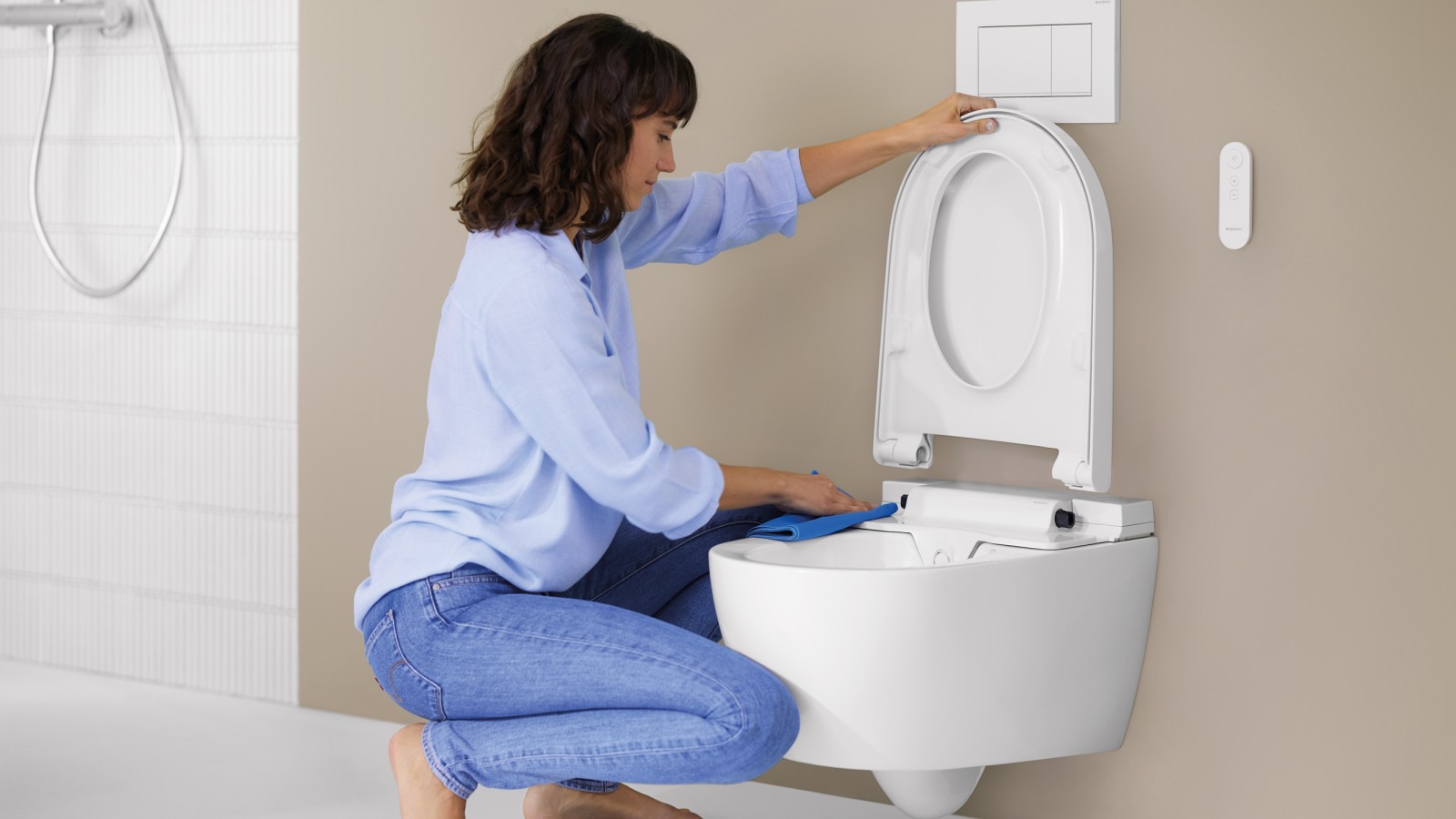
3. Strong and durable
Consumers often worry about the stability and safety of a toilet attached to the wall. However, modern installations are rigorously tested, and Geberit installation frames have been in use all over the world for 50 years. Although they appear lightweight and floating, wall-hung toilets from Geberit are strength-tested and have a weight limit of up to 63 stone (400kg). Installation frames are securely anchored inside the wall and distribute weight efficiently across the wall structure for maximum stability. The cistern is leak-proof thanks to its blow-moulded construction from one piece. In addition, each cistern is individually tested to guarantee watertightness.


4. Sleeker design
Bathroom spaces are generally getting smaller, yet design is a top priority. This is confirmed by the survey, with 84% of respondents stating that a modern bathroom design is important to them. Floating toilets are both aesthetic and practical, creating a modern look with a sense of openness. The hidden cistern reduces visual clutter, helping to maintain a minimalist aesthetic. Available in a wide range of shapes and finishes – from rounded to square – wall-hung toilets and matching flush plates provide a lot of design flexibility to suit any bathroom style.

5. Reduced flushing noise
One of the most overlooked yet big benefits of wall-hung toilets is reduced flushing noise. The water flows directly from the concealed cistern into the waste pipe behind the wall, minimizing sound transfer through the floor. Compared to free-standing toilets, wall-hung solutions offer a quieter, more discreet bathroom experience. This benefit makes them appealing not only in private homes, multi-storey homes or shared spaces where noise reduction is valued.
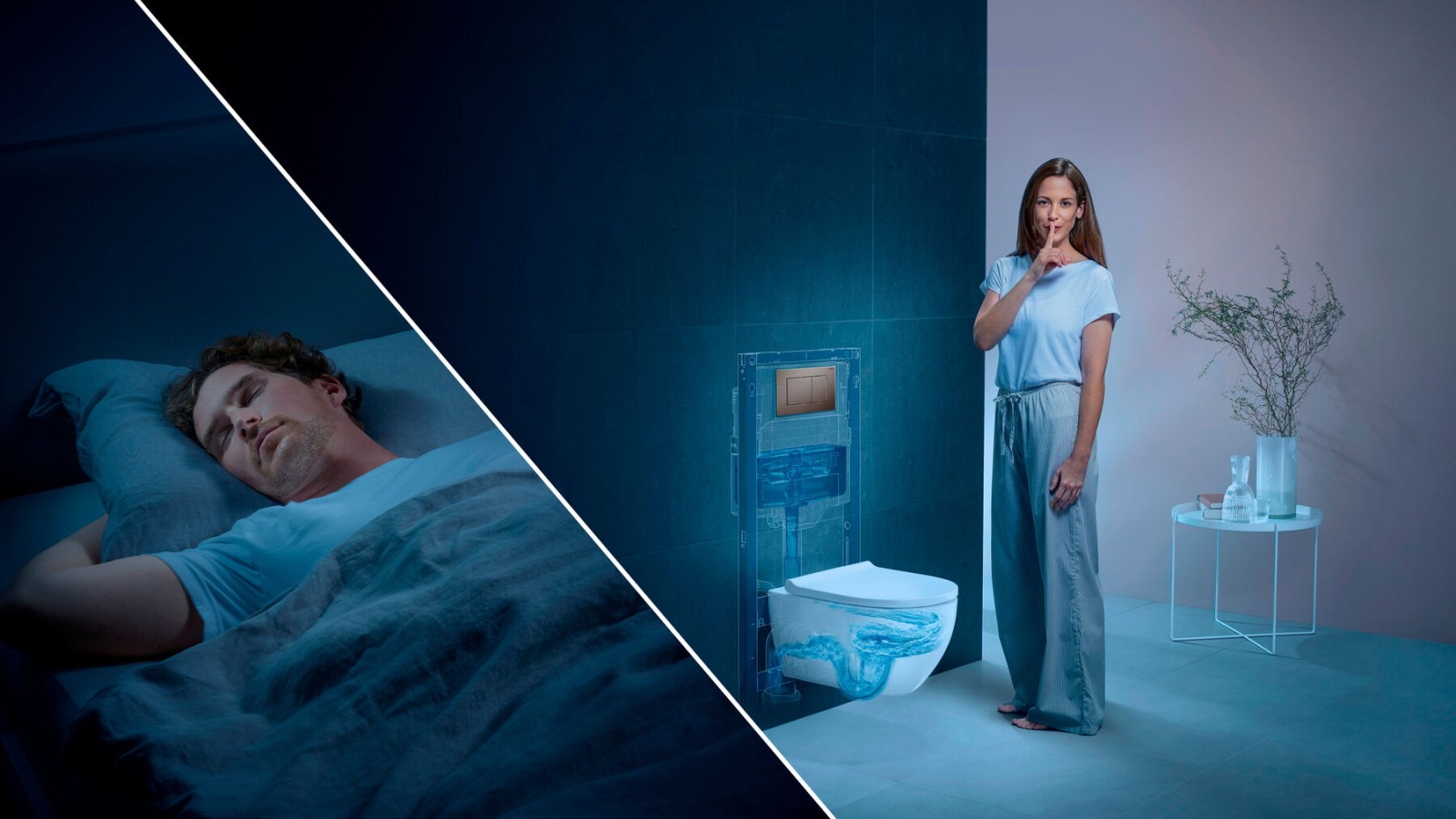
6. Easy maintenance
Even though the cistern is hidden behind the wall, maintenance is simple. By removing the flush plate, the concealed cistern can be accessed easily. When a part such as a valve needs replacing, the process is quick and hassle-free, as the opening is large enough for any hand to perform the task comfortably.
The standard in modern bathrooms
While there are many types of toilets available on the market, an increasing number of people are recognizing the benefits of wall-hung toilets. 65% of those surveyed said that the potential benefits of easier cleaning, a sleeker look and space-saving design make wall-hung toilets more appealing.
Today, wall-hung toilets – which can be either standard WCs or shower toilets – have become a popular choice in modern bathroom design, addressing challenges around space, hygiene and installation flexibility. Once homeowners experience the advantages, they do not want to go back. In fact, 83% of the surveyed owners of a wall-hung toilet would recommend one to their friends or family. With this high level of satisfaction, the growing availability of affordable options, and a wider range of design choices, wall-mounted toilets are on their way to becoming the standard in modern bathrooms.
Frequently asked questions about wall-mounted toilets
Is a floating toilet safe?
Yes, it is safe. Geberit toilets and pre-wall installation frames are tested for stability. When installed correctly, they can support up to 63 stone (400 kg).
Geberit offers a complete WC system where the concealed cistern, the toilet frame, the pan and push plate are perfectly matched to one another to ensure seamless compatibility, consistent design, reliable performance and simplified installation.
Can wall-hung toilets leak?
Geberit concealed cisterns are made from one piece, reducing the likelihood of leaks. Moreover, each Geberit cistern is individually tested to ensure watertightness.
Is a wall -hung toilet safe for heavier users?
Yes. Geberit toilets and pre-wall installation frames are tested for stability. When installed correctly, the weight limit of Geberit wall-hung toilets and toilet frames are engineered to support up to 63 stone. This provides ample safety for heavier users.
How do I install a wall-hung toilet with a frame?
Installing a wall-mounted toilet requires a sturdy pre-wall installation frame, such as Geberit Duofix or Geberit Duofix Alpha. Firstly, secure the frame to the floor and wall, ensuring it is level. Next, connect the water supply and waste pipes and test the cistern to ensure correct installation. Close the wall with suitable boarding and leave openings for the flush plate, WC fixings, waste and water supply pipe. Finally, mount the toilet pan and attach the flush plate to the hidden cistern through the wall opening.
What happens if the concealed cistern or plumbing behind a wall-hung toilet needs maintenance?
Routine maintenance, such as replacing a fill or flush valve, is simple. There is no need to break the wall because the concealed cistern is accessible through the flush plate opening. Just remove the Geberit actuator plate to carry out the required task.
Newsletter Register now
Stay up to date
Our newsletter provides fascinating insights and handy tips on how your bathroom can make your life easier.
